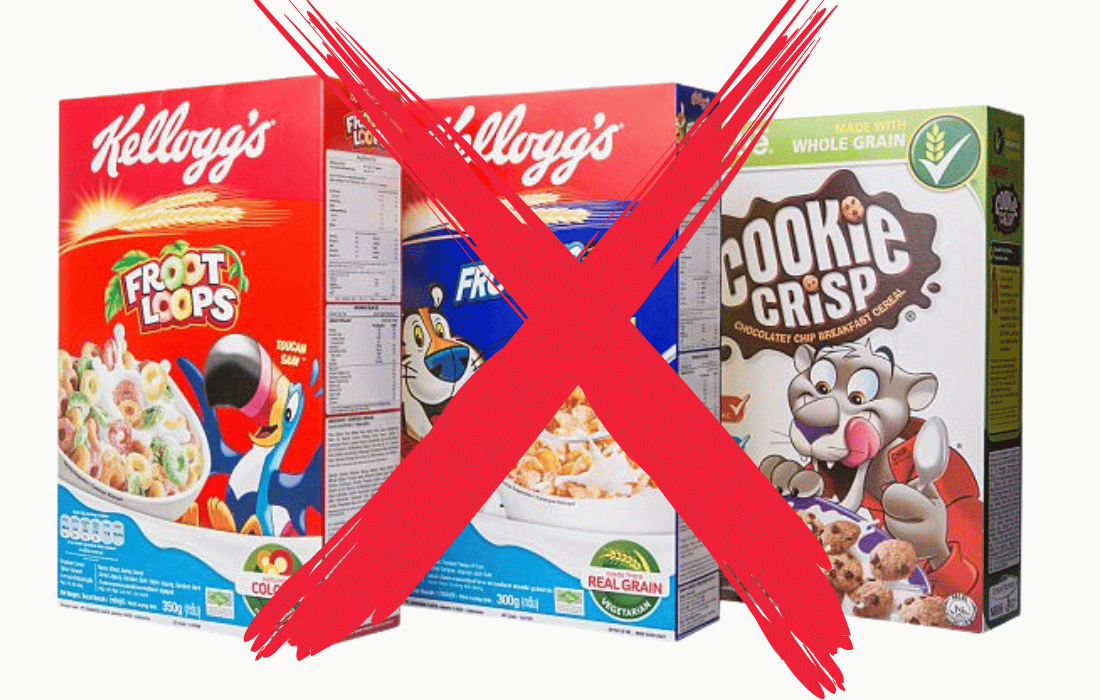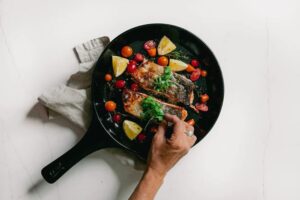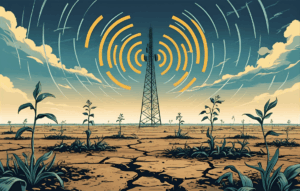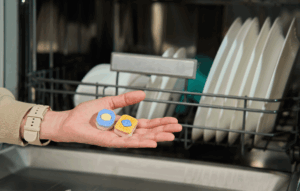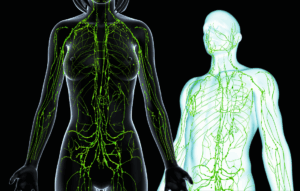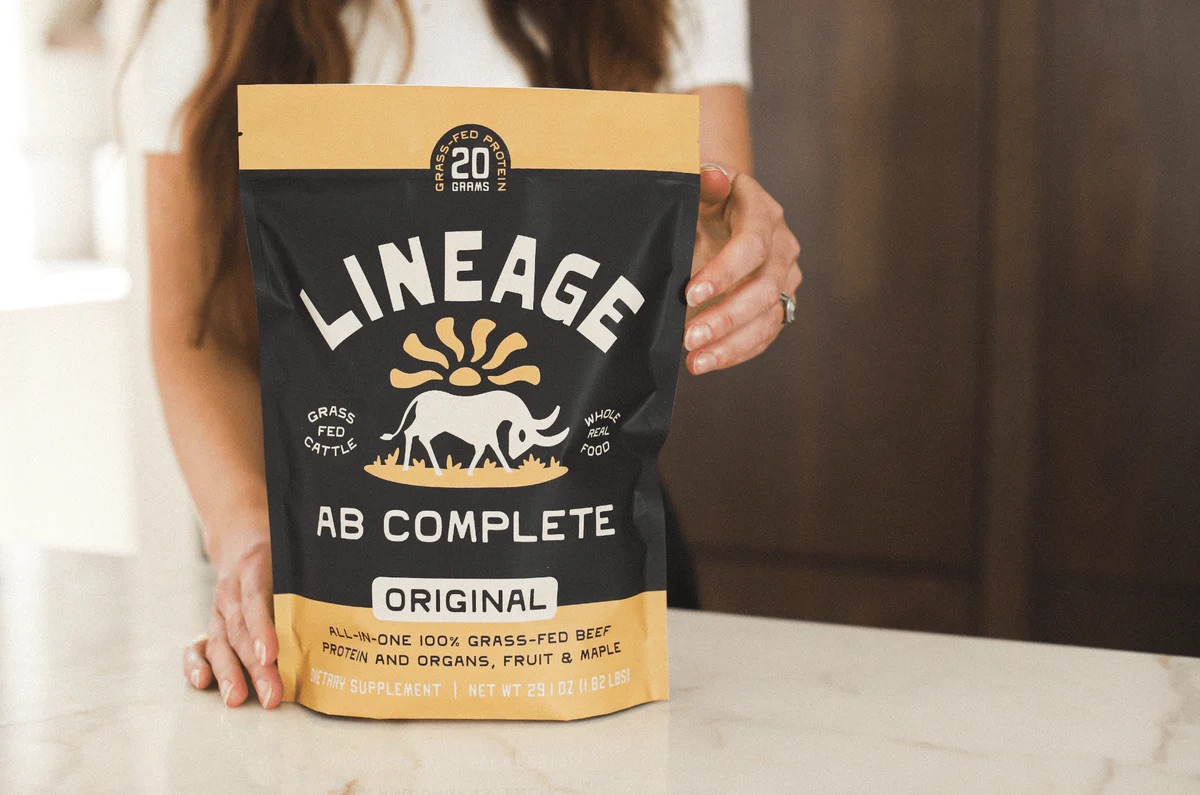Food additives, especially artificial colors and preservatives in children-targeted foods, have become a major point of contention. Recently, Kellogg’s cereal products, known for their vibrant colors, have come under scrutiny as consumers, activists, and health-conscious advocates question why the company uses synthetic dyes in the U.S. while employing safer alternatives in other countries. Actress Eva Mendes and wellness influencer Vani Hari, also known as “The Food Babe,” are among the notable voices demanding transparency and cleaner ingredients from Kellogg’s, joining a chorus of parents, health advocates, and concerned consumers urging the company to make good on its 2015 promise to phase out artificial colors in the U.S.
The controversy isn’t only about Kellogg’s—it raises broader questions around food safety, corporate responsibility, and the FDA’s regulatory role. If Europe and Canada require Kellogg’s to use natural dyes, why are American consumers subjected to synthetic ingredients? In this article, we’ll dive deep into the health risks of artificial dyes, explore why Kellogg’s is defending its practices, and discuss how consumer advocacy is changing the conversation around food transparency.
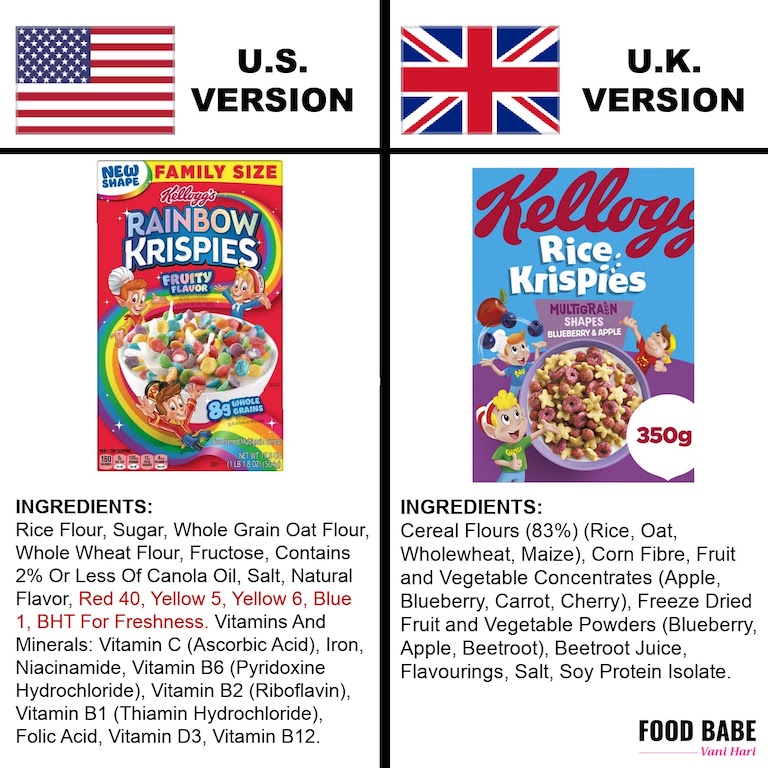
The Health Risks of Artificial Dyes
Hyperactivity and Behavioral Issues in Children
One of the most significant concerns about artificial dyes is their potential effect on children’s behavior. Studies, such as the 2007 University of Southampton study, have drawn a correlation between food dyes and hyperactivity in children. This study found that synthetic dyes—particularly Yellow No. 6, Red No. 40, and Blue No. 1—exacerbate symptoms of hyperactivity, especially in children with pre-existing attention disorders. The study’s findings led the European Union to require warning labels on products containing these dyes, alerting consumers that they “may have an adverse effect on activity and attention in children.” Research published by California’s Environmental Protection Agency in 2021 reaffirmed this connection, citing that artificial dyes can significantly impact children’s behavioral health and emphasizing that children vary in their sensitivity to these dyes. Asa Bradman, a professor of public health, highlighted that these synthetic dyes have demonstrated behavioral effects on children predisposed to ADHD and related behavioral conditions.
Carcinogenic Potential
Red No. 3, a dye associated with thyroid tumors in animal studies, was banned from cosmetics in the U.S. in 1990 but remains legal in food products. Other dyes like Red No. 40 and Yellow No. 5 have faced scrutiny due to their potential links to cancer. The FDA, despite significant findings, continues to permit these chemicals for food use, raising questions about the agency’s standards. In addition, Butylated Hydroxytoluene (BHT), a preservative present in many Kellogg’s cereals, has been linked to potential health risks, including carcinogenicity, and is banned in several countries. However, BHT remains prevalent in the U.S., raising ethical questions about corporate responsibility and consumer safety.
Immune System and Cognitive Impairments
Beyond behavioral and carcinogenic risks, additional studies have shown that artificial dyes can disrupt immune system responses and affect cognitive function by altering neurotransmitter production. The California Environmental Protection Agency’s report highlighted that synthetic dyes can impact memory, learning, and mood. Since the FDA’s safety levels for these dyes were set decades ago and have not been updated with newer research findings, advocates argue that U.S. standards fail to protect the behavioral health of children adequately.
Why Kellogg’s Uses Artificial Dyes and Defends It
Kellogg’s uses artificial dyes to create bright, appealing colors in products like Froot Loops and Apple Jacks, especially to attract young consumers. Synthetic dyes, derived from petrochemicals, are cost-effective compared to natural colorants, like beet juice or turmeric, allowing Kellogg’s to maximize profits while keeping production costs low. From a corporate perspective, the continued use of synthetic dyes helps maintain brand appeal and market share. The company defends its practices by stating that its ingredients meet all FDA regulations. According to the FDA, synthetic dyes are safe within approved limits, a stance Kellogg’s echoes in its statements about transparency and consumer choice. The company cites complex formulation requirements and potential flavor changes as reasons for delays in implementing natural colorants in U.S. products.
In 2015, Kellogg’s committed to removing artificial dyes from its U.S. products, a pledge that remains unfulfilled nearly a decade later. In response to the current criticism, Kellogg’s continues to emphasize its compliance with all FDA safety standards, but this defense sidesteps the broader ethical concerns raised by parents and advocates, particularly given that Kellogg’s has successfully removed synthetic dyes in international markets like Canada and the EU. The inconsistent standards have sparked public outcry and fueled claims that Kellogg’s prioritizes profits over health.
The Role of Consumer Advocacy and Legal Action
Vani Hari, widely known as “The Food Babe,” has long been vocal about the dangers of artificial dyes in food, particularly those marketed toward children. In collaboration with activist Jason Karp, Hari launched a legal campaign against Kellogg’s, seeking accountability for the unfulfilled 2015 pledge to phase out synthetic dyes. Along with hiring top attorney Alex Spiro, the campaign demands that Kellogg’s cease using synthetic dyes and preservatives in American cereals. Spiro’s legal letter, addressed to Kellogg’s Board of Directors, calls for an immediate meeting to discuss a timeline for removing artificial ingredients.
Hari, supported by her “Food Babe Army” of health-conscious consumers, aims to pressure Kellogg’s through petitions, social media, and public advocacy. Hari’s efforts reflect a growing consumer movement that calls for transparency and safer standards in American food production. Her campaign, endorsed by prominent wellness figures like Jesse Itzler and Calley Means, points to a larger cultural shift where consumers demand corporate responsibility and more stringent FDA regulations on food safety.
Why Synthetic Dyes Are Banned in Other Countries but Allowed in the U.S.
In Europe, synthetic dyes like Yellow No. 5 and Red No. 40 come with mandatory labels indicating potential adverse effects on children’s behavior, a requirement that has led companies to voluntarily switch to natural colorants to avoid the warning. Kellogg’s and other major brands use natural dyes in European markets to meet these stricter standards, relying on alternatives such as fruit and vegetable extracts to maintain product appeal. In contrast, the FDA approves synthetic dyes for food use, asserting that these ingredients are safe within regulated amounts. This disparity highlights fundamental differences in how food safety is regulated globally. European regulations are guided by the precautionary principle, prioritizing consumer safety by restricting potentially harmful additives. The FDA, however, maintains that synthetic dyes are safe until substantial evidence proves otherwise.
The inconsistency in standards underscores a critical point: the FDA’s safety levels for artificial dyes are outdated, failing to incorporate modern research findings that suggest these dyes pose risks to children’s health. As a result, U.S. consumers are left to navigate a marketplace where synthetic dyes are not only allowed but also widely used in products aimed at children.
Steps for a Safer Diet: Reducing Artificial Dyes
For individuals and families concerned about artificial dyes in their diet, there are several strategies to reduce exposure:
1. Sign the Petition
We are calling on Kellogg’s to eliminate all artificial colors, flavors, and BHT from their cereals. Join me in pushing for safer ingredients—sign the petition today!
2. Read Labels Carefully
Examine ingredient lists for synthetic dyes (e.g., Red No. 40, Yellow No. 5, Blue No. 1) and preservatives like BHT. Choose products with natural colorants or without added colors, and be aware of the common synthetic dyes in processed foods.
3. Opt for Naturally Colored Foods
Many brands now offer naturally colored products, responding to the demand for cleaner labeling. Look for products using natural colorants like beet juice, spirulina, and turmeric. These safer alternatives provide vibrant colors without introducing synthetic chemicals into the diet.
4. Prioritize Whole, Unprocessed Foods
Whole foods such as fresh fruits, vegetables, whole grains, and lean proteins are free from synthetic dyes, making them a healthier alternative to processed foods. For families, preparing breakfasts like oatmeal, smoothies, or chia pudding can provide color, flavor, and nutrients without artificial additives.
5. Support Brands Committed to Clean Labeling
Choose brands that are transparent about ingredients and prioritize clean labeling. Companies that align with consumer demands for safer foods create a ripple effect, encouraging other brands to follow suit. Supporting these brands contributes to a market shift that prioritizes health over profit.
A Holistic Approach to Food Safety: Advocacy, Accountability, and Awareness
The movement against artificial dyes is about more than food coloring—it represents a shift toward transparency, corporate accountability, and consumer-driven change. The pressure on Kellogg’s to align its U.S. products with cleaner standards in other markets reflects a growing demand for ethical practices within the food industry. For consumers, this controversy serves as a powerful reminder to question food ingredients and advocate for safer standards.
As health-conscious consumers, we have the power to drive change. Whether through signing petitions, choosing naturally colored foods, or supporting brands committed to transparency, each action contributes to a larger movement toward a safer, more transparent food system. The challenge remains clear for Kellogg’s: as public awareness and scrutiny grow, aligning with consumer expectations for healthier ingredients may be the only sustainable path forward.
By embracing informed choices, we encourage a food system that values safety and transparency. The movement against synthetic dyes marks a critical step toward a cleaner, more ethical food industry—one where health takes precedence over profit.

